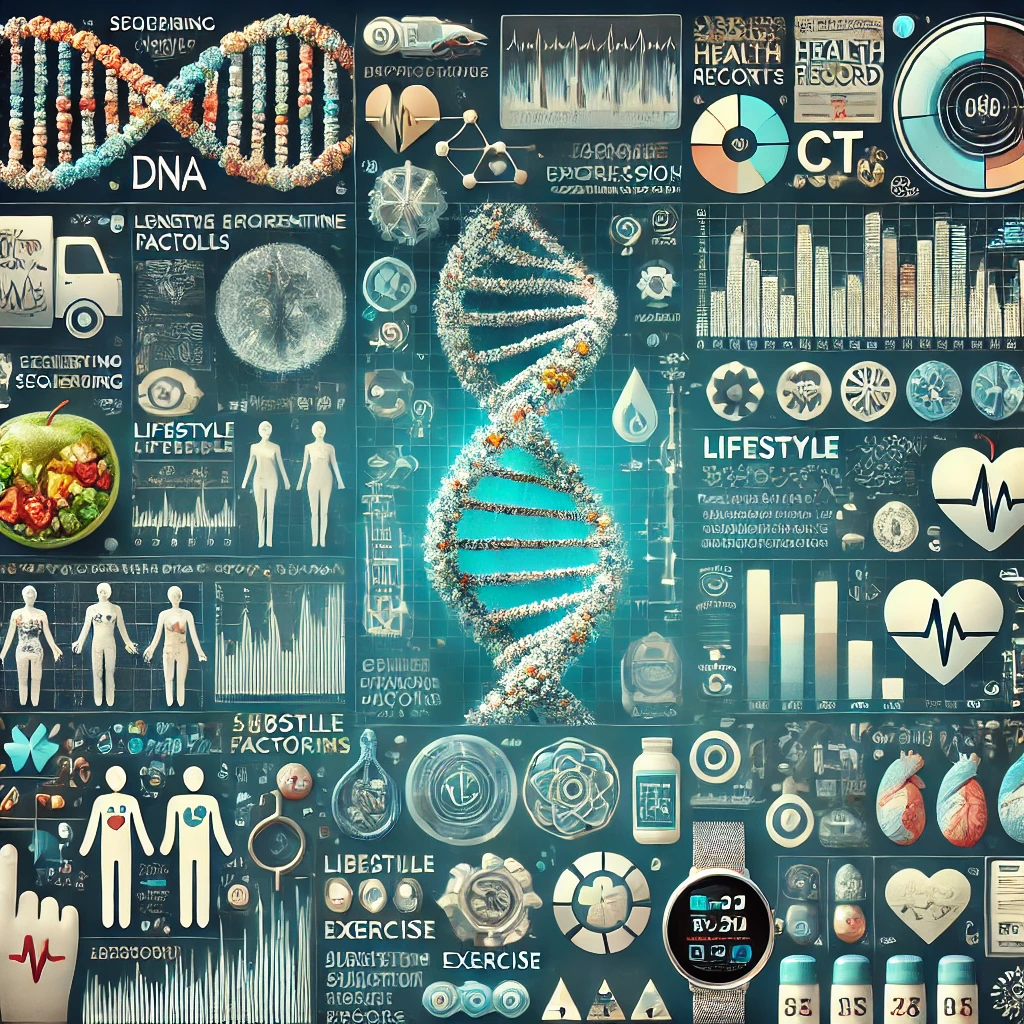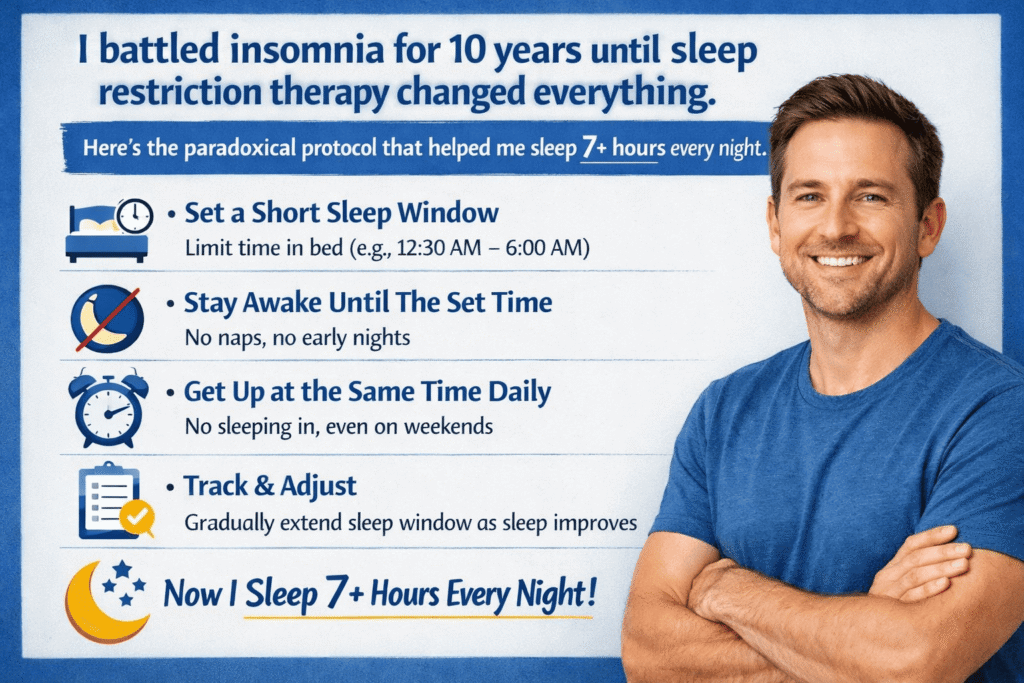Introduction
From communication to work, artificial intelligence (AI) is revolutionizing many facets of society. To add; advanced AI recent developments now lead to predictions about one the deepest and personal components of a human life — lifespan and longevity.

In the hands of powerful machine learning algorithms, a wealth of data about an individual — their genetics, lifestyle, medical history — can be analyzed to help produce personalized estimates of an individual’s health span, life span and disease risk. Direct-to-consumer services are now providing AI-powered longevity forecasts, where the predictions are based on personal biodata.
Advocates say this kind of technology could drive useful changes to a person’s health and enable preventive medical approaches aimed at individual risks. But critics raise serious ethical alarms, warning that the practice raises risks of discrimination, psychological damage, and an unhealthy obsession with longevity.
But as AI is further rolled out to predict lifespans, big questions remain about responsible oversight, bias reduction, and delivering forecasts with helpful context. While promising, this new application of AI also needs to be approached crusiously to ensure it enhances, not endangers, human health and well-behavior.
AI Methods for Lifespan Prediction
AI and ML algorithms are increasingly used to personalise predictions about human health and longevity by analytics of individual health data. These generative AI systems can take in a massive diversity of personal information to produce lifespan and mortality risk estimates, including:
- Genetic information such as DNA sequencing and profiles of gene expression
- Lifestyle factors such as diet, physical activity levels, sleep patterns and substance use
- These include medical images like X-rays, MRIs, and CT scans
- Electronic health records that include medical histories, diagnoses, medications, procedures, doctors’ notes
- Wearable devices and smartphone apps that track everything from vital signs and activity to sleep
- Demographic details including age, gender, ethnicity, education and zip code
- Blood test parameters, including biomarkers that measure cholesterol, blood sugar, immune function and other aspects of health

These heterogeneous datasets can then use powerful machine learning algorithms to pinpoint patterns and correlations with longevity outcomes. The algorithms “learn” how to predict lifespans by being trained on huge datasets in which the actual lifespans are known. They become increasingly accurate the more data they have access to. In total, big data and AI allow for hyper-personalized statistics on life expectancy, disease risk and health span — how long a person can expect to live healthily.
Potential Benefits
The AI-generated predictions of lifespan can be of multiple advantages which can ensure better health. Estimates of longevity and disease risk provided by such technology can enable individuals to implement positive behavior changes. Assume that individuals know their potential life expectancy and frailty. As a result, they might feel inspired to eat healthier, exercise, stop smoking, and take other positive steps to improve their life expectancy.”
AI algorithm powered lifespan predictions also enable the tailoring of medical interventions to a person’s unique health profile. Pharmaceuticals and preventative screenings can be calibrated to a person’s predicted life span, health span and risk factors. Medical practitioners can design better-targeted and more-promising interventions aimed at extending a specific person’s life. AI predictions make disease prevention and life extension more personalized.
The capacity to predict health trajectories earlier in life may enable individuals to modify their lifestyles and pursue targeted therapies that would curtail risk and enhance healthspan. When used responsibly, AI lifespan forecasting could serve as a tool to inspire positive change and create new avenues in personalized medicine.
Potential Risks
There are many concerns over the AI lifespan prediction that are essential about its risks.
Discrimination. As AI models are trained on data, they are at risk of carrying forward — or even reinforcing — prevailing biases or discrimination patterns. For instance, if the algorithms are trained on unrepresentative data, predictions may be less accurate for minority groups. There are fears that lifespan predictions could be used to discriminate in cases such as employment, insurance and healthcare. We need regulations and ethics oversight to avoid anti-discrimination.
Psychological harms. Lifespan predictions could have a huge psychological toll, too, especially for people predicted to live shorter-than-average lives. Hearing such a prediction could cause anxiety, depression and feelings of fatalism or hopelessness. We also need safeguards to reduce predictability trauma, offer mental health services and remind folks that predictions all come with uncertainty.
Unhealthy obsession. Others worry that personalized AI forecasts of life span could encourage an unhealthy obsession with living longer. People might get too absorbed with prolonging their lives at any price. But quality of life is more significant than just adding years to life. Ethicists say that context is key when it comes to predictions; otherwise they could encourage an obsession with longevity.
Ethical Concerns
The increasing role of AI in predicting lifespans comes with many ethical and moral issues to consider.
Privacy
To make accurate predictions, AI systems require access to highly personal data like genetics, medical records and lifestyle habits. This meets the risk of the violation of privacy if there is a lack of security or the levels of anonymization of such data are insufficient. Good data governance has to be well established.
Transparency
The AI models that will generate these lifespan estimates must be transparent and open to scrutiny. Without insight into how the models function, determining fairness and avoiding bias is impossible. These should detail their methodology when offering such services.
Bias
Dataset bias can lead AI to make less accurate predictions for specific demographics. For example, if longevity data comes mainly from one ethnicity or socioeconomic group, the model could skew against others. Ongoing audits are required to detect and correct any biases.
Access Limitations
Such prediction services are likely to be accessible only to the rich, widening inequality in health care, the worry is. For policymakers, the challenge will be to determine how they can ensure equitable access if lifespan prediction does take its place as a normal component of medicine.
Strong regulatory guidelines for transparency, audibility and access will be crucial to the responsible introduction of this technology. It is imperative that all stakeholders are involved in the policy development process through which AI lifespan prediction can be harnessed to benefit humanity while reducing the costs.
Regulatory Oversight is Needed
Also, as AI lifespan prediction technologies evolve, regulatory oversight will be essential as we incorporate these systems into the world so that they are fair, accurate, and do not create unintended harm.
Regulators specifically need to establish procedures to ensure that AI lifespan models are developed using high-quality data and that they do not contain embedded biases. Historical data on medical statistics and demographics often captures entrenched patterns of discrimination and unequal access to health care. An A.I. trained on such data might yield predictions that reinforce existing biases and inequities.
Regulators should require stringent third-party testing and auditing of AI lifespan models prior to their deployment. This includes checking for biased or incomplete training data and the testing of predictions on real-world diverse populations. Approval must be denied to models that produce biased or inaccurate results.
Transparency requirements around AI lifespan models should also be put in place. The types of data used for training purposes, as well as disclosures on limitations and uncertainties, must be made available to regulators and end-users. This way, the outputs can be properly contextualized and appreciated.
With careful oversight and the right policies, they can both facilitate the development of this inoculation and help ensure that it is done safely. That will be important to make sure this technology encourages fairness, accuracy, and responsible innovation as it develops.
Transparency Needs
When AI is used to generate personalized lifespan predictions, limitations and uncertainties must be communicated to users. The models underpinning these predictions estimate biological relationships based on available data, not making definitive conclusions.
Lifespan predictions involve various sources of uncertainty that must be conveyed, including:
- We have an inherent unpredictability and underlying randomness due to complex biological systems such as human health. Even with complete information, chance factors influence lifespan.
- This algorithm depends on discontinuities and mistakes when it comes to a person’s health records. Data that is either missing or incorrect leads to a decrease in accuracy.
- It’s the best that can be done to train AI models on the human lifespan. 2 Models might not actually be as diverse as the population.
- The model algorithms incorporate assumptions and simplifications. Models are all abstractions of reality.
- The challenge of forecasting how lifestyle changes and medical treatments might shift disease risks over time. Human behavior brings with it the element of surprise.
Transparently conveying these uncertainties is essential for individuals using AI lifespan predictions to contextualize and understand the limitations of this technology. Predictions should be accompanied by clear explanations of the potential errors and a range of reasonable outcomes. Responsible use of AI requires open acknowledgment of its constraints.
Contextualizing Predictions
AI lifespan predictions should be treated as impartial and to a degree adaptable. These algorithms use personal biomarkers and health data to produce estimates, but predictions are based on statistical models that can only approximate reality, and uncertainty grows with time. Like any predictive tool, AI longevity predictions will not be right about everyone, every time.
People might too literally take AI lifespan predictions to heart — or let them grow into psychologically self-fulfilling. But predictions are not a fixed fate or deadline of any sort. They are insights and probabilities, not a certain prediction of the future.
Interpreting predictions sensibly involves understanding that complex interactions between genetics, lifestyle, and environmental factors influence lifespan. Even with a personalized AI analysis, there is inherent variability. Predictions should be contextualized as providing motivating information to optimize one’s health, not an expiration date to fixate upon.
With prudent oversight and uncertainty transparency, AI can offer constructive insights into health risks and longevity. However, predictions should be communicated carefully to avoid psychological harm or fatalistic thinking. Maintaining a balanced perspective will allow society to leverage these emerging technologies for better health outcomes responsibly.
Impact on Health Attitudes
The availability of AI-driven lifespan predictions may influence societal views on longevity, health, and wellbeing in both positive and negative ways. On the one hand, personalized insights into one’s expected lifespan could motivate people to make healthier lifestyle choices and prioritize disease prevention. Knowing your risk factors early on can inspire the adoption of positive health behaviors. However, critics argue widespread lifespan estimates could also promote an unhealthy obsession with longevity at any cost.
There are concerns that society might become overly focused on outliving others instead of living well. This could fuel anxiety, competitiveness around anti-aging interventions, and stigma against those deemed “at risk.” Responsible implementation requires considering how AI prediction technologies shape attitudes and ensuring they promote holistic wellbeing, not just extended lifespan. There needs to be an emphasis on quality of life and accepting mortality as part of existence. With conscientious governance, AI could help people treasure their finite time while avoiding promoting extreme longevity as an ultimate good.
Discrimination Risks
There is a concern that AI systems used for lifespan prediction could be discriminative toward various groups. Artificial intelligence systems processing biased datasets can unintentionally reflect discriminatory practices in past health and life insurance data. For instance, in some cases, algorithms are less accurate in making predictions for black patients than white patients.
Without proper safeguards and testing for bias, AI lifespan predictions could disadvantage minorities and other vulnerable populations. Historical prejudices and unequal access to healthcare could become embedded within these automated systems. Some algorithms may inadvertently associate certain demographic factors with reduced longevity, even if these correlations stem from societal inequities rather than innate biological risks.
AI lifespan tools require ongoing audits for algorithmic bias and fairness to avoid perpetuating discrimination. Researchers must scrutinize training data and predictions to ensure accuracy across different populations. Companies should also get input from various social scientists and ethicists when developing predictive lifespan AI. Ethically providing truly personalized predictions requires understanding and mitigating the complex societal factors influencing health outcomes.
Psychological Considerations
Predictions about how long someone will live or the chances they have of becoming sick can be psychologically powerful. Such AI-generated predictions might increase anxiety, depressions, or even cause suicidal ideation in some, when a lower-than-hoped-for life expectancy prediction lands. People may feel a sense of fatalism about their future health and life expectancy based on the output of the algorithm. This may have detrimental effects on motivation, optimism and engagement with preventative health behaviors.
At the same time, even predictions framed positively as higher-than-average life expectancy could foster complacency rather than motivation. Additionally, inaccurate predictions that underestimate disease risk may give some false reassurance. Critics argue that for many individuals, knowledge of one’s predicted lifespan may do more psychological harm than good.
To mitigate potential adverse psychological outcomes, experts emphasize that AI predictions should not be taken as definitive. Predictions are uncertain and incorporate population-level risk models rather than accounting for individual variability. Caution is warranted to avoid overinterpreting lifespan estimates as a fixed outcome. Providing context, clear communication of limitations, and emphasizing that lifestyle behaviors can impact longevity may help counter fatalistic attitudes. More research is needed on effective communication strategies to minimize anxiety and resignation when discussing AI-generated lifespan predictions.
Promoting Responsible Use
As AI lifespan prediction technologies become more prevalent, developing best practices and guidelines to promote responsible and ethical use will be crucial. Industry leaders, policymakers, and healthcare professionals should collaborate to establish standards and oversight mechanisms.
Some key areas to address include:
- Ensuring transparency in generating predictions, including providing details on methodology, limitations, and uncertainties. Companies should avoid overselling predictions that are inaccurate.
- Preventing discrimination by auditing algorithms for biases and ensuring predictions are based on comprehensive, fair data. Efforts must be made to avoid penalizing groups based on ethnicity, gender, or economic status.
- Protecting user privacy through data minimization, anonymity, consent requirements, and encryption. Only necessary personal data should be collected and used.
- Contextualizing and communicating predictions carefully to avoid psychological harm. Predictions should be framed as estimates, not definitive assessments.
- Educating users on the proper interpretation and appropriate uses for lifespan predictions. Predictions should be viewed as one input for making health decisions.
- Promoting access to responsible AI prediction services while limiting unproven direct-to-consumer products. Policy levers like certification may help distinguish responsible providers.
Developing clear ethical guidelines and best practices—with input from diverse stakeholders—will allow AI lifespan prediction to progress responsibly. With careful oversight and prudent use, it can become a force for improved health outcomes.
The Path Forward
As AI advances, ongoing ethical oversight will ensure this technology positively impacts human wellbeing. Though AI-driven lifespan and health predictions offer intriguing possibilities, they also raise profound questions about how individuals and society view longevity, health, and personal medical data.
It will be necessary to institute guardrails and governance frameworks that promote responsible development and use of AI in longevity prediction. Independent ethics committees can help oversee this emerging field and provide guidance on upholding principles of transparency, equity, non-discrimination, and respect for human dignity. Governments must also update regulations to ensure privacy protections remain robust in an era of expanding health data utilization.
Furthermore, developers of AI lifespan systems must avoid hype, rigorously validate predictive models, and transparently communicate limitations. Doctors and healthcare providers should exercise caution in utilizing AI predictions, carefully weighing benefits versus potential patient harms. Proactive efforts are needed to prevent AI lifespan estimates from exacerbating health disparities or being misapplied beyond their intended purposes.
With conscientious governance and ethical oversight, the promise of AI for personalized health insights can be responsibly fulfilled. As this technology matures, maintaining human values must remain the top priority. AI should not aim to optimize longevity at any cost but rather provide thoughtful, holistic support for living life well.
Conclusion
As we have seen, artificial intelligence opens up new possibilities for predicting human lifespan and health span based on personal data. These AI systems analyze factors like genetics, lifestyle, and medical history to generate personalized longevity and disease risk estimates. While intriguing, this emerging technology also raises profound ethical questions that must be addressed.
Key benefits of AI lifespan prediction include allowing customized medical treatments and preventative interventions based on an individual’s risks. More accurate insights into health and longevity can motivate positive behavior changes. However, significant dangers and pitfalls must also be considered. Ethical concerns around discrimination, privacy violations, and psychological harm need to be tackled. Strict regulations and oversight are required to ensure predictions are unbiased and companies are transparent about limitations.
Looking ahead, AI-powered lifespan and healthspan forecasting hold substantial promise if deployed responsibly. This technology could benefit human wellbeing with careful governance, ethical guidelines, and proper communication of uncertainties. But in the wrong hands, it poses dangers of misuse, exploitation, and harmful unintended consequences. A nuanced public conversation around tradeoffs will be vital as we determine the appropriate role of AI in predicting and shaping human longevity.


